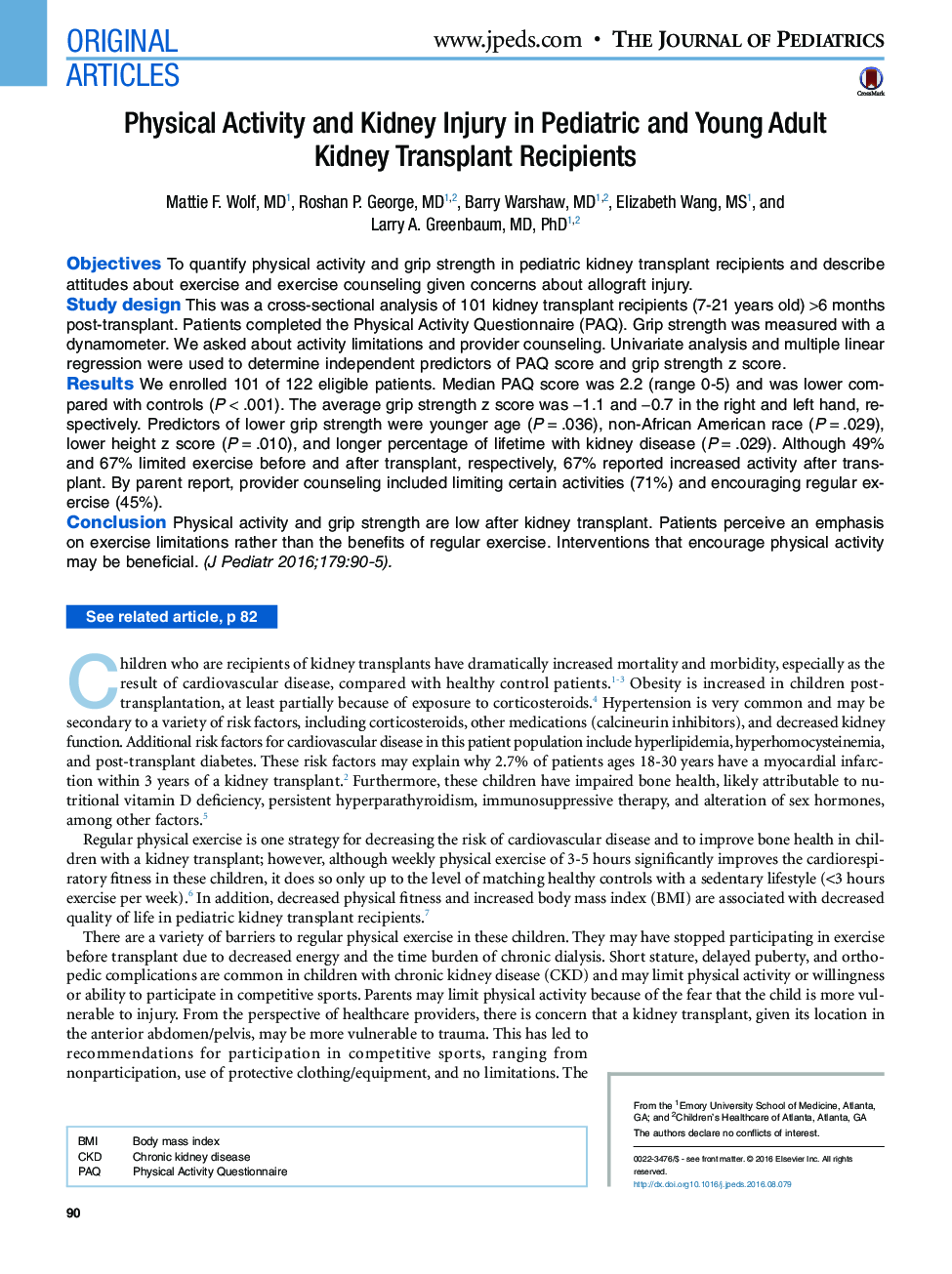| Article ID | Journal | Published Year | Pages | File Type |
|---|---|---|---|---|
| 5719516 | The Journal of Pediatrics | 2016 | 8 Pages |
ObjectivesTo quantify physical activity and grip strength in pediatric kidney transplant recipients and describe attitudes about exercise and exercise counseling given concerns about allograft injury.Study designThis was a cross-sectional analysis of 101 kidney transplant recipients (7-21 years old)â>6 months post-transplant. Patients completed the Physical Activity Questionnaire (PAQ). Grip strength was measured with a dynamometer. We asked about activity limitations and provider counseling. Univariate analysis and multiple linear regression were used to determine independent predictors of PAQ score and grip strength z score.ResultsWe enrolled 101 of 122 eligible patients. Median PAQ score was 2.2 (range 0-5) and was lower compared with controls (Pâ<â.001). The average grip strength z score was â1.1 and â0.7 in the right and left hand, respectively. Predictors of lower grip strength were younger age (Pâ=â.036), non-African American race (Pâ=â.029), lower height z score (Pâ=â.010), and longer percentage of lifetime with kidney disease (Pâ=â.029). Although 49% and 67% limited exercise before and after transplant, respectively, 67% reported increased activity after transplant. By parent report, provider counseling included limiting certain activities (71%) and encouraging regular exercise (45%).ConclusionPhysical activity and grip strength are low after kidney transplant. Patients perceive an emphasis on exercise limitations rather than the benefits of regular exercise. Interventions that encourage physical activity may be beneficial.
